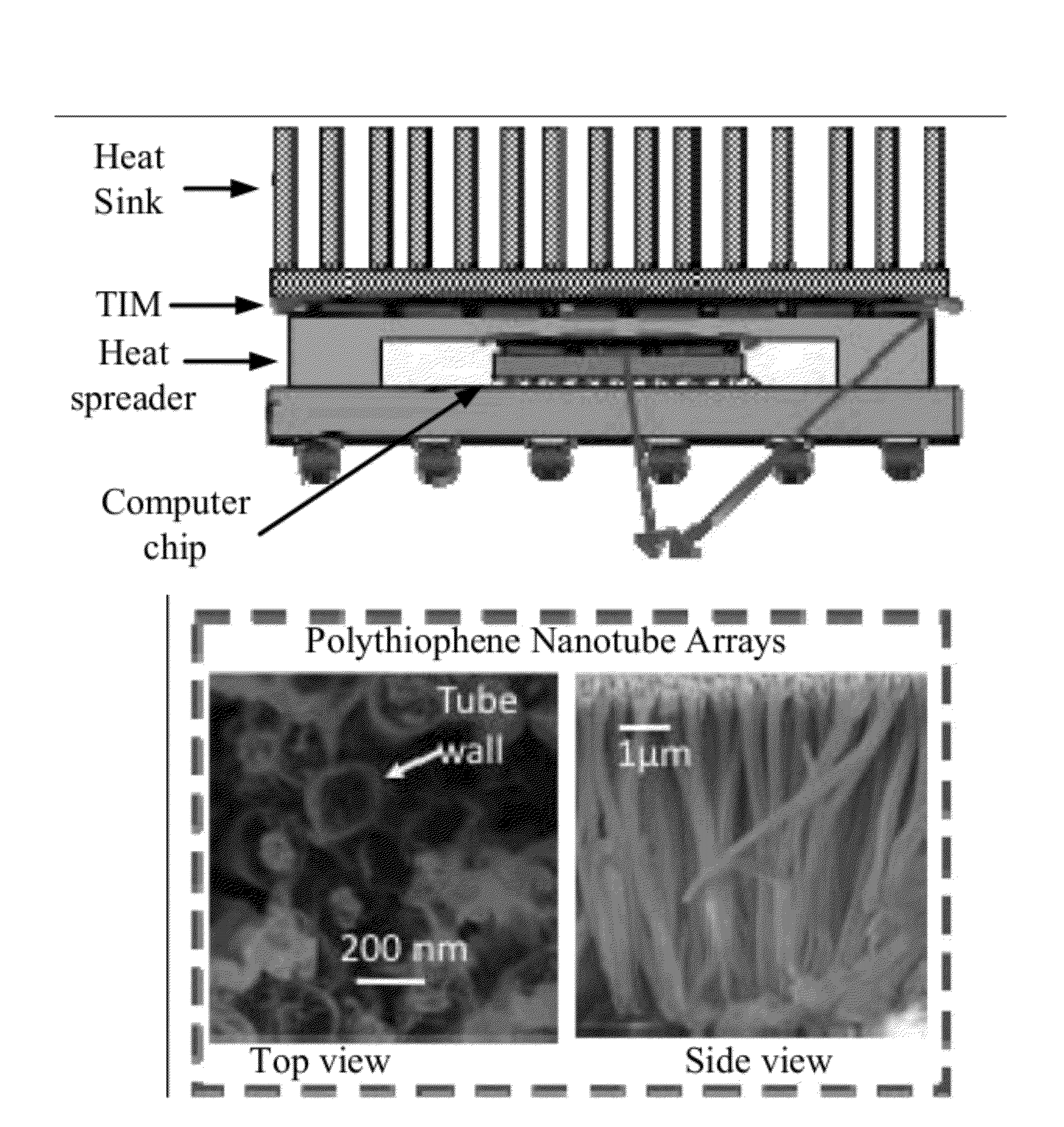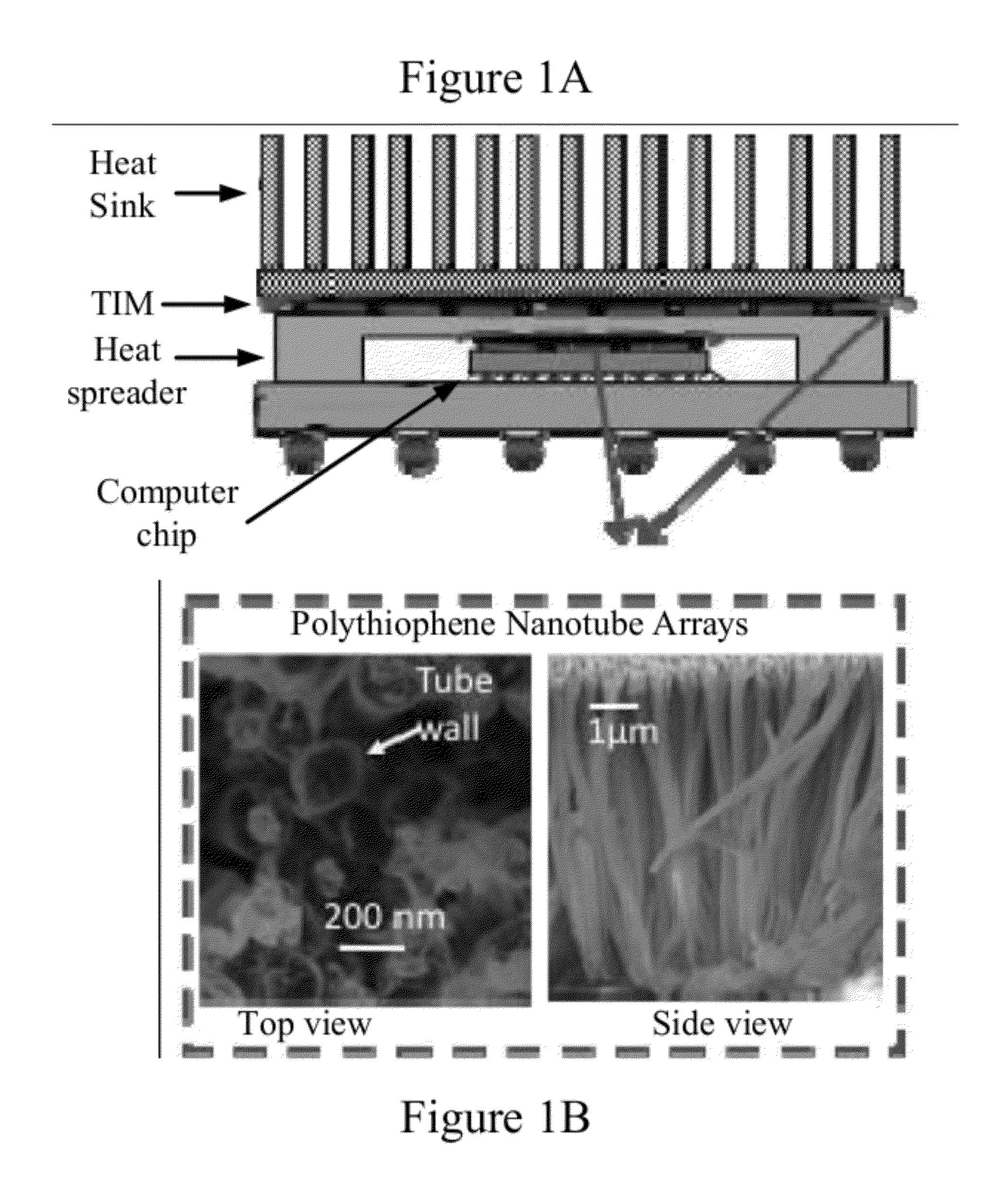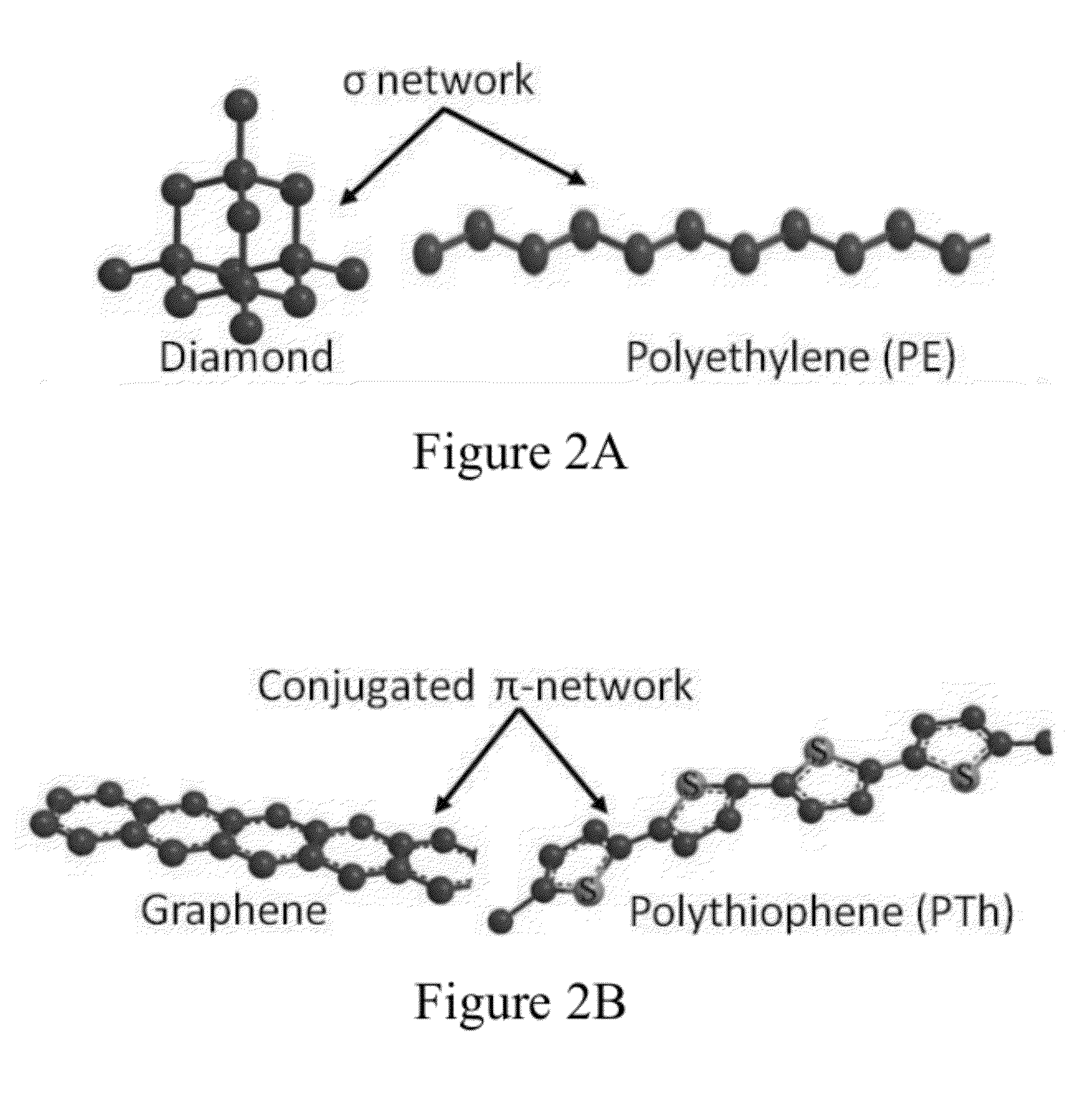Nanostructured composite polymer thermal/electrical interface material and method for making the same
a composite polymer and thermal/electrical interface technology, applied in the field of thermal transfer systems, can solve the problems of limiting the temperature available to drive heat rejection from convective surfaces, loss of more than 10-20° c. across each interface, and conventional tims have failed to address such desires
- Summary
- Abstract
- Description
- Claims
- Application Information
AI Technical Summary
Benefits of technology
Problems solved by technology
Method used
Image
Examples
Embodiment Construction
[0030]To facilitate an understanding of the principles and features of the present invention, various illustrative embodiments are explained below. In particular, the invention is described in the context of being thermal interface materials, heat transfer systems, and methods of fabricating thermal interface materials. Embodiments of the present invention may be applied to many systems or devices where it is desired to transfer thermal energy from a heat source to a heat sink, including, but not limited to, electronic chip stacks.
[0031]The components described hereinafter as making up various elements of the invention are intended to be illustrative and not restrictive. Many suitable components or steps that would perform the same or similar functions as the components or steps described herein are intended to be embraced within the scope of the invention. Such other components or steps not described herein can include, but are not limited to, for example, similar components or ste...
PUM
| Property | Measurement | Unit |
|---|---|---|
| temperature | aaaaa | aaaaa |
| interface pressure | aaaaa | aaaaa |
| time | aaaaa | aaaaa |
Abstract
Description
Claims
Application Information
 Login to View More
Login to View More - R&D
- Intellectual Property
- Life Sciences
- Materials
- Tech Scout
- Unparalleled Data Quality
- Higher Quality Content
- 60% Fewer Hallucinations
Browse by: Latest US Patents, China's latest patents, Technical Efficacy Thesaurus, Application Domain, Technology Topic, Popular Technical Reports.
© 2025 PatSnap. All rights reserved.Legal|Privacy policy|Modern Slavery Act Transparency Statement|Sitemap|About US| Contact US: help@patsnap.com



